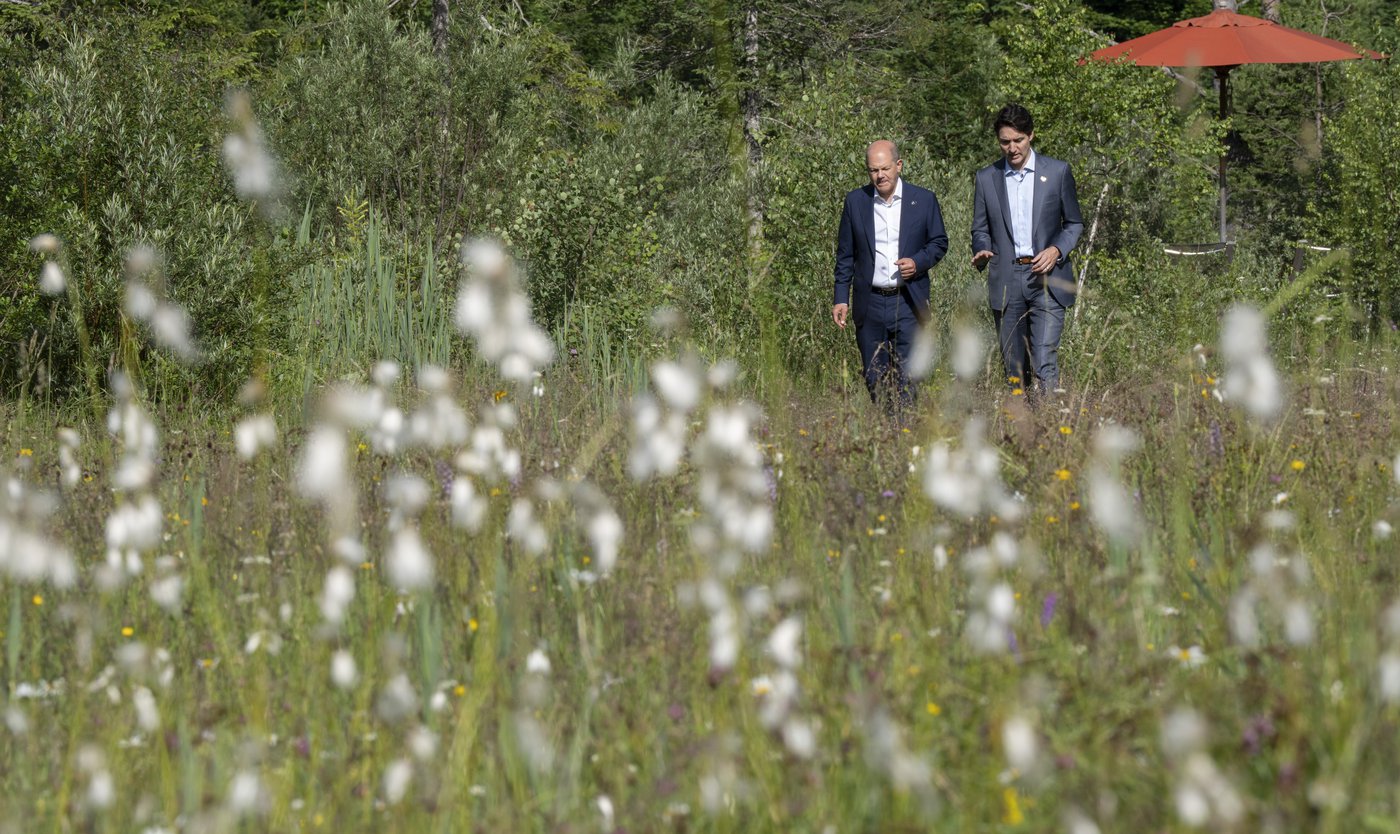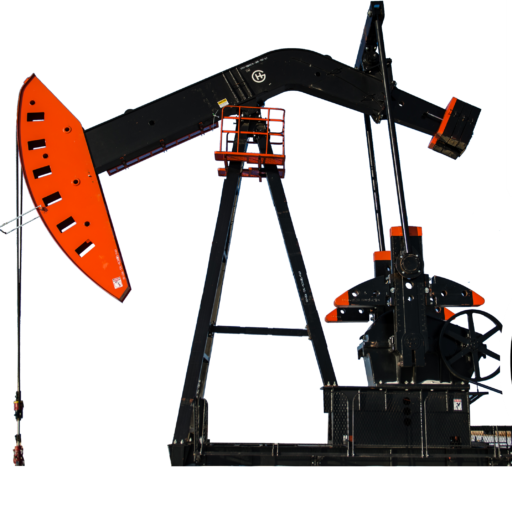
Prime Minister Justin Trudeau and Olaf Scholz, Chancellor of Germany Take a stroll at the G7 Summit in Schloss Elmau on Monday, June 27, 2022. THE CANADIAN PRESS/Paul Chiasson

By Laura Osman in Ottawa
Some energy experts warn a deal to sell Canadian hydrogen to Germany will serve as only a small, far-off and expensive part of the solution to Europe’s energy crisis.
German Chancellor Olaf Scholz and Prime Minister Justin Trudeau are set to sign a hydrogen agreement in Stephenville, N.L. next week, during Scholz’s official visit to Canada.
A government official speaking on the condition they not be identified confirmed there will be a hydrogen accord signed that is the culmination of months of talks between the two countries.
Stephenville, a port town an hour south of Corner Brook on Newfoundland’s west shore, is the planned home for a zero-emission energy plant where wind power will be used to produce hydrogen and ammonia for export.
The deal between Canada and Germany is expected to make fuel-hungry Germany the first big customer for a first-of-its-kind project in Canada.
Germany was already looking to hydrogen as an energy solution in its climate plan before Russia invaded Ukraine last February. But since that invasion, as Russia attempts to push back against punishing economic sanctions, it has repeatedly threatened Germany’s energy supply.
Germany typically gets about half of its natural gas from Russia and is looking for both short and long-term solutions to wean itself from Russian exports.
Proponents say the hydrogen deal comes at a pivotal time for Canada’s green hydrogen industry, which is still in its infancy.
But some experts also say the fledgling product carries a big price tag and won’t be able to help Germany in the near term. Canada doesn’t yet have the infrastructure to produce large quantities of green hydrogen, or export it great distances.
“The key is you need a lot of associated infrastructure to be built before we can do a large scale export of hydrogen into other countries,” said Amit Kumar, the industrial research chair of the Natural Sciences and Engineering Research Council.
In order to be shipped, the hydrogen would likely need to be cooled into a liquid, loaded into a specially adapted pipeline or tanker, and warmed again when it reached its destination.
The process and infrastructure is expensive, and so is production.
Most hydrogen production globally comes from converting natural gas to hydrogen and carbon dioxide. If the latter is emitted into the atmosphere, the hydrogen is referred to as “grey.” In Canada, the goal is to capture those emissions with carbon capture and storage, which would make the hydrogen “blue.”
Canada has to date been talking up plans to help Germany with new natural gas projects in Atlantic Canada that could one day be converted to blue hydrogen facilities.
But Germany is looking mainly for “green hydrogen,” which is made through splitting water molecules using renewable energy like wind or solar power. That comes at a much higher price.
“You’re looking at anywhere between three to four fold increase in costs,” said Kumar, a faculty of engineering professor at University of Alberta, who was consulted on the drafting of Alberta’s hydrogen strategy.
He said the technology needs to improve and more investment needs to be made before the cost is even relatively comparable with it’s natural-gas derived alternative.
The company behind the Newfoundland project, World Energy GH2, said the first phase of its Newfoundland project should see up to 164 onshore wind turbines built to power a hydrogen production facility. Long-term plans call for tripling the size of the project.
In its proposal, World Energy GH2 said it is on the cutting edge of a new, green industry.
Construction on the first wind farm is supposed to begin next year. That means hydrogen production is still far off, said Paul Martin, chemical engineer and co-founder of the Hydrogen Science Coalition.
“It’ll take years and years and years,” he said. “And then you’ve got the infrastructure problem.”
Martin says the infrastructure costs of producing and transporting green hydrogen don’t add up.
“Honestly looking at it the green hydrogen pitch in Canada for export, it’s disingenuous,” he said.
That’s partially why Canada’s hydrogen strategy involves moving toward “blue hydrogen” before eventually converting to green, Kumar said.
Germany’s strategy, however, clearly favours green hydrogen while the role of blue hydrogen is uncertain, an analysis by Centre for Strategic and International Studies fellow Isabelle Huber shows.
Trudeau and Scholz, who became Germany’s chancellor in December, first discussed hydrogen and Canadian energy exports when Trudeau visited Berlin in March.
At the G7 leaders’ summit in the Bavarian Alps in June, Trudeau spoke at length with other world leaders about how Canada could offer alternatives to nations dependent on Russian oil and gas.
At a press conference at the conclusion of the summit, Trudeau suggested infrastructure used to carry liquefied natural gas could be adapted to carry hydrogen, as one example of how Canada could help.
“We’re also looking medium term at expanding some infrastructure,” Trudeau said, “but in a way that hits that medium-term and long-term goal of accelerating transition — not just off Russian oil and gas — but off of our own dependence on fossil fuels.”
Canadian hydrogen might be just one piece of Germany’s plan to transition off of German gas in a very difficult situation, said Sara Hastings-Simon, who directs the masters of science in sustainable energy development at the University of Calgary.
“It’s not the be all end all, it’s neither going to fix it completely or be the single answer,” she said in an interview.
This report by The Canadian Press was first published Aug. 16, 2022.
— With files from Mia Rabson
- 0100 Turnbull Project Manager0100 Turnbull Project Manager
- 0099 Mryglod Steel 1080p0099 Mryglod Steel 1080p
- 0097 Eagle Sky Ventures LTD0097 Eagle Sky Ventures LTD
- 0095 Fast Trucking nearly 70 years good at it0095 Fast Trucking nearly 70 years good at it
- 0053 Kingston Midstream Westspur Alameda Click Before You Dig0053 Kingston Midstream Westspur Alameda Click Before You Dig
- 0092 Turnbull projects big and small0092 Turnbull projects big and small
- 0046 City of Estevan This is Estevan Teaser0046 City of Estevan This is Estevan Teaser
- 0087 Lori Carr Coal Expansion0087 Lori Carr Coal Expansion
- 0077 Caprice Resources Stand Up For Free Speech0077 Caprice Resources Stand Up For Free Speech
- 0076 Latus only0076 Latus only
- 0061 SIMSA 2024 For Sask Buy Sask0061 SIMSA 2024 For Sask Buy Sask
- 0055 Smart Power Be Smart with your Power office0055 Smart Power Be Smart with your Power office
- 0051 JML Hiring Pumpjack assembly0051 JML Hiring Pumpjack assembly
- 0049 Scotsburn Dental soft guitar0049 Scotsburn Dental soft guitar
- 0041 DEEP Since 2018 now we are going to build0041 DEEP Since 2018 now we are going to build
- 0032 IWS Summer hiring rock trailer music
- 0022 Grimes winter hiring
- 0021 OSY Rentals S8 Promo
- 0018 IWS Hiring Royal Summer
- 0013 Panther Drilling PO ad 03 top drive rigs
- 0006 JK Junior
- 0002 gilliss casing services0002 gilliss casing services
- 9002 Pipeline Online 30 sec EBEX9002 Pipeline Online 30 sec EBEX
- 9001
